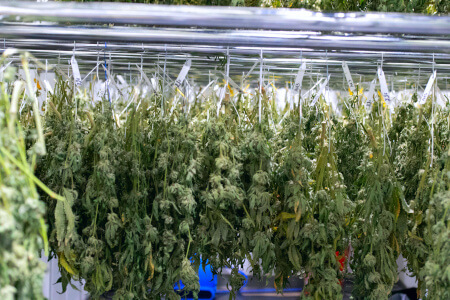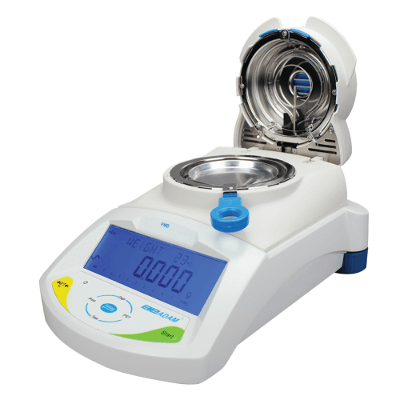
As with any agricultural product, the moisture content of botanicals is an important concern. Botanicals, though, can be stored for weeks or months following harvest until it reaches a dispensary. During this time, it may be susceptible to microorganisms and contaminants such as fungi (too much moisture) or mold (too little moisture).
Moisture control and effective drying practices are critical to keeping botanicals safe and ensuring a high-quality product for patients and consumers. The concern about the wait is particularly relevant in Oregon, where the market currently contends with about six years’ worth of oversupply.

How Much Moisture Should Botanicals Have?
Freshly harvested botanical plants have a moisture content of about 70 to 80 percent by weight. Most commercial growers dry their plants (but don’t cure them) to 15 percent. From that point, botanicals are dried to a moisture content dictated by intended use: 6 to 9 percent for medical botanicals, 8 percent for smoking, 10 to 12 percent for smoking with tobacco and 12 to 15 percent for vaporizing.
Curing botanicals increases its potency, as well as affecting its flavor and the quality of smoke. Properly curing it also allows the botanical to be stored for longer periods of time (up to two years without a significant loss of potency if stored in an airtight container in a cool, dark place). Like any plant, botanicals begin to degrade upon harvesting because they're no longer receiving nutrients from their roots. The process of curing stops degradation before terpenes and cannabinoids evaporate or transform into less desirable compounds, altering their psychoactive properties.
The Role of Moisture in Botanical Testing
Beyond the safety concerns of preventing mold or fungi, moisture can also affect THC levels, which in turn affects the classification of the plant as cannabis or hemp, as well as sales prices. Extractors, for example, often buy based on the amount of THC.
Consider two identical 10g samples of cannabis containing 2g of THC, which would yield a THC content of 20 percent. Drying one sample – which reduces its weight – to 5g would increase its percentage of THC to 40 percent, despite the actual amount of THC remaining the same.
Regulations at the state and local levels commonly require testing for THC potency, both for cannabis and hemp. To compensate for moisture’s effect on THC levels, submit cannabis samples that have been dried or cured to the moisture level expected at the point of sale.
To be classified as hemp in the U.S., the THC level cannot exceed 0.3 percent on a dry weight basis. (The definition varies by country, with some capping the THC level of hemp as low as 0.2 percent and as high as 1 percent.) Farm bills in 2014 and 2018 relaxed restrictions on American hemp production, which has led to a dramatic increase in the growing of hemp.
Because of differences in grower licensing between hemp and cannabis production, hemp that tests above the legal limit of 0.3 percent THC must be destroyed.

Moisture Analyzers in the Botanical Industry
How do moisture analyzers – sometimes called moisture balances – help botanical growers, extractors and wholesalers? A common misconception is that they measure water content. They don’t. A loss-on-drying moisture analyzer such as Adam Equipment's PMB actually measures the weight change of the sample. They analyze anything that evaporates, whether that’s water, oils, fats or other similar substances.
For quality control, the industry needs accurate measurement of moisture content for raw botanicals, dried botanicals, cured botanicals, edible botanicals and CBD products.
Too much moisture is certainly bad for the plant itself, but it could also lead to complications for the botanical consumer, especially those with immunodeficiencies. Smoking increases the health risks even further, though the shelf life, flavor, texture and processability would likely be impacted for edibles.
Moisture analyzers also save time. Sample preparation for analytics of active ingredients (such as terpenes and cannabinoids) or for CO2 extraction would take hours with a drying oven. A moisture analyzer cuts that time down hours to minutes.
In addition to the botanical industry, moisture analyzers can also be used in food processing, pharmaceutical, environmental and materials science labs.

